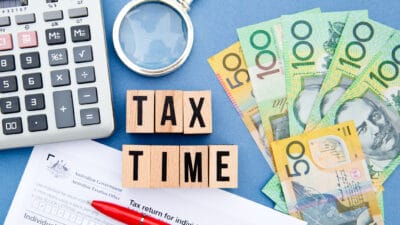The strategies covered in my investing series to date (growth investing, GARP shares, and value investing) all look at profiting from capital appreciation. This fourth instalment looks at another key strategy employed by investors – investing for income.
What is dividend investing?
Dividend investing is buying shares that payout a portion of their current or past earnings to shareholders as a dividend. As Australians, we are lucky that we often also receive franking credits attached to our dividends. A franking credit is a tax offset for tax that a company has already paid on its profits.
The yield you require from your portfolio will depend upon a range of circumstances, including how close you are to retirement. Regardless, it is important to remember the power of compounding. Looking for dividend paying stocks which can grow their earnings and dividends over time is a sure fire way to beat the interest from a bank account or even the market over time. A company with a relatively modest 3% yield today that grows its dividend at 10% per annum for 10 years will have a 7.8% yield at the end of the 10 years.
Some companies have a tremendous history of consistently paying dividends each year. A company that pays a dividend for 25 years or more in a row is known as a dividend aristocrat. Some Australian examples include Ramsay Health Care Limited (ASX: RHC) and Washington H. Soul Pattinson & Co. Ltd (ASX: SOL). In the US companies like General Electric Company (NYSE: GE) and Pfizer Inc. (NYSE: PFE) have paid dividends for more than 100 years!
Numbers to consider when investing in dividend shares
Yield
A dividend yield is the percentage of a company's share price that is paid out as a dividend each year.
A high dividend yield either indicates a high payout ratio (discussed below) or low share price, and visa-versa. If a company is trading on a lower price-based multiple (low share price), the market is indicating that it believes the company will grow earnings relatively slowly. You need to consider this as a dividend that provides a high dividend yield today may not grow much in the immediate future. That is, unless the current payout ratio can be increased.
Payout ratio
The payout ratio is the percentage of earnings a company pays to shareholders in the form of a dividend.
The payout ratio is critical to dividend sustainability. If a company is paying out all of its earnings, there are no funds left over to reinvest back into the business. Reinvesting in everything from research and development to staff or plant is important for businesses to maintain and grow their competitive advantage and market share. Growing market share and competitive advantages should help a business grow its earnings and, if management chooses, its dividend too.
The Foolish bottom line
Dividend investing is a great way to reduce the volatility in your portfolio. Not only are dividend-paying stocks are usually more established and cash-flow positive, but the income from your dividends can support your portfolio in tough times for the market.








